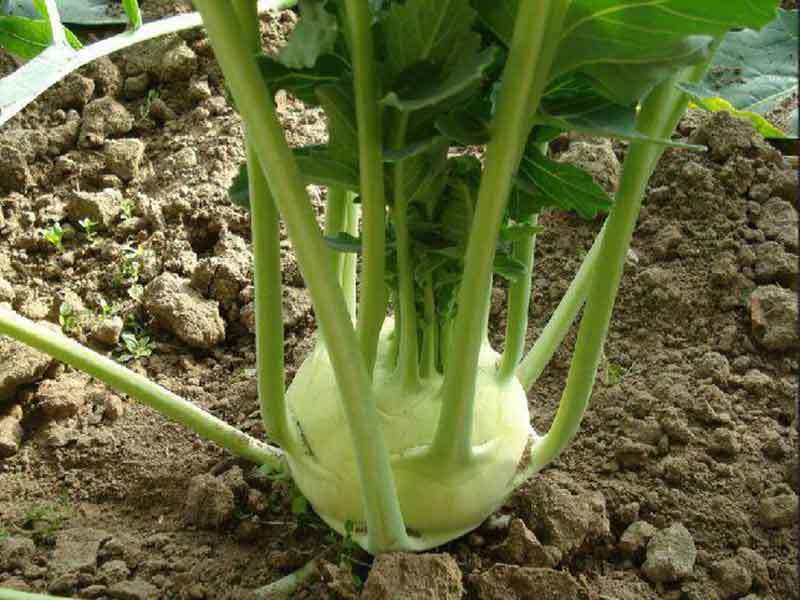The Ultimate Guide to Square Foot Gardening Kohlrabi
Introduction
Kohlrabi, a member of the cabbage family, is an excellent vegetable to grow in a square foot garden. We will provide a comprehensive guide on kohlrabi square foot gardening.
Getting Started with Square Foot Gardening
Kohlrabi Types for Square Foot Garden
There are two main types of kohlrabi that are suitable for square foot gardening: green and purple. The green variety has a mild flavor and is best for raw consumption. While the purple variety is slightly sweeter and more suitable for cooking.
Selecting the Right Location
The ideal spot should receive at least 6-8 hours of sunlight per day. If you are growing kohlrabi, choose a location that receives partial shade in hot climates.
Building the Square Foot Garden Bed
You will need to build a frame using untreated lumber or purchase pre-made garden bed kits. The standard size for a square foot garden bed is 4x4 feet. But you can adjust the size according to your space availability. The bed should be at least 6 inches deep to accommodate the roots of kohlrabi.
Choosing the Right Soil Mix
Make sure the soil mixture is well-draining with soil pH 5.5-6.8. We recommend the equar part of vermiculite, peat moss and compost. Mix the ingredients well and fill it into the raised bed. This will provide an excellent foundation for square foot gardening kohlrabi. Replenish the soil every year with fresh compost to maintain its nutrient content.
Planting Kohlrabi in Square Foot Garden
When to Plant Kohlrabi?
The best time is in early spring or fall. This cool-season crop prefers temperatures between 40°F-75°F. It can tolerate light frosts. Avoid planting in the summer because high temperatures can cause kohlrabi to bolt and become bitter.
How Many Kohlrabi Per Square Foot?
You can grow one kohlrabi per square foot. You should leave enough room for the bulb to develop and prevent overcrowding.
Kohlrabi Spacing Square Foot Garden
You should give kohlrabi plants enough space to grow, typically about 4-6 inches apart. You can also grow kohlrabi in containers with at least 12 inches of depth.
Companion Planting with Kohlrabi
You can plant kohlrabi with other cool-season vegetables. For example, lettuce, spinach, and radishes. You can also grow kohlrabi near herbs. For example, dill, sage, and thyme. These plants help deter pests and improve soil quality for kohlrabi. Avoid planting with other brassica family plants like broccoli and cabbage. Because they may attract similar pests and diseases.

Essential Care Tips
Watering Guidelines
Kohlrabi plants require consistent moisture, but not too much water. Over-watering can lead to root rot and other diseases. It's best to water deeply once a week, rather than lightly every day. This allows the roots to develop deeper.
You can stick your finger in the soil to check. If it feels dry up to your first knuckle, then it's time to water. You may need to water more frequently during hot and dry weather.
Fertilizing Requirements
You should fertilize them regularly to ensure your kohlrabi plants get the nutrients they need. Use a balanced fertilizer and apply it every four weeks. For example, a 10-10-10 formula.
Common Pests and Diseases in Kohlrabi
Aphids, flea beetles, and cabbage worms are common pests that may attack your plants. You can use insecticidal soap or neem oil spray to prevent these pests.
In terms of diseases, kohlrabi may be affected by clubroot, a fungal disease that causes stunted growth and yellowing leaves. You should rotate your crops and ensure proper drainage to prevent it.
Harvesting and Storing Kohlrabi
Signs of Ripeness
Look for a bulb 2-3 inches in diameter and feel firm to the touch. The color of the skin should be a vibrant purple or green. This depends on the variety.
Harvesting Techniques
To harvest kohlrabi, simply grab the base of the plant. Gently twist and pull upwards. The bulb may not be ripe yet if it doesn't come off easily. Give it a few more days to mature in this case.
Proper Storage to Preserve Freshness
Once harvested, store kohlrabi properly to keep it fresh and flavorful. Remove any leaves attached to the bulb. You can store kohlrabi in the refrigerator. It can last for one week. But it's best to use it within 2-3 days for optimal freshness.
Troubleshooting Common Issues
Yellowing Leaves
Yellowing leaves can be a sign of various issues. For example, nutrient deficiencies, pests, and diseases. Before taking any action, it is important to identify the cause of the yellowing leaves.
Overwatering: If your soil is consistently wet or you are watering too frequently, this can lead to root rot and yellowing leaves.
Nutrient deficiency: Square foot gardening kohlrabi relies on a specific mix of soil and compost. So regularly replenish nutrients in the soil. You can add organic fertilizers or compost if your leaves are yellowing due to a nutrient deficiency.
Pest infestations: Pests can damage your plants. This leads to yellowing leaves. Pay attention to any signs of pests. You should treat them accordingly.
Diseases: Some plant diseases can cause yellowing leaves. Proper spacing and ventilation in kohlrabi square foot gardening can help prevent the spread of diseases.
Addressing Nutrient Deficiencies
To address this problem, regularly add organic fertilizers or compost to your garden beds. You can also use a foliar spray with nutrients to provide a quick boost to plants. Additionally, rotate your crops every year and practice intercropping. This helps replenish nutrients in the soil naturally.
You can conduct a soil test or consult with a local gardening expert. They can provide recommendations on specific fertilizers and amendments.
Conclusion
We have covered everything from selecting the right location to maintaining and harvesting your crop. By following our tips and techniques, you will have a kohlrabi square foot garden and enjoy fresh kohlrabi all year round.

